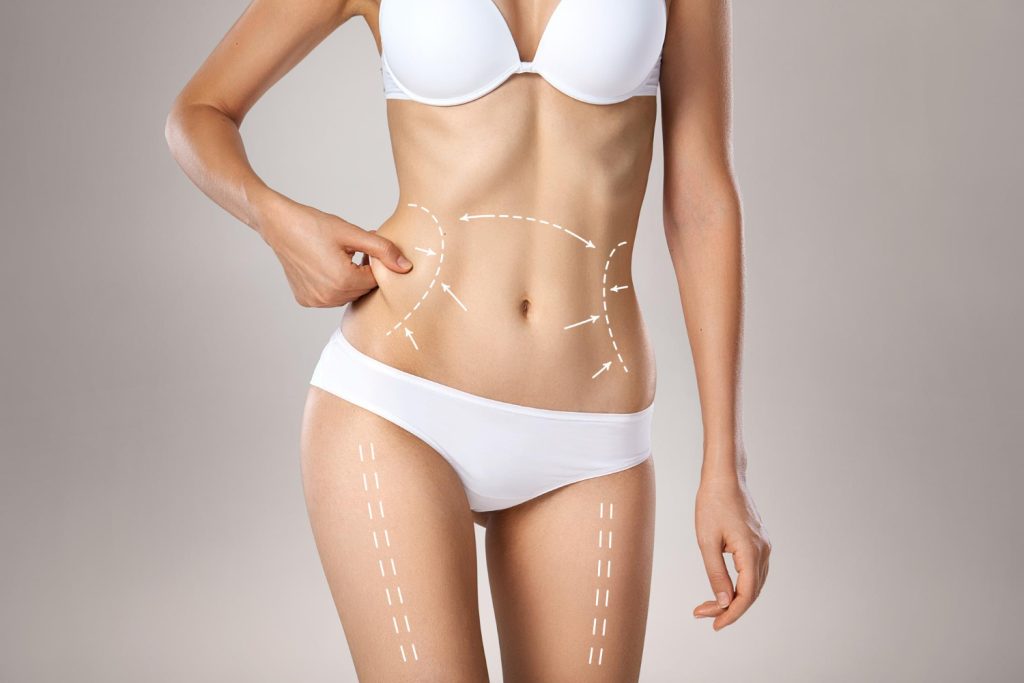The demand for liposuction in the United States has remained high for years. Data from the American Society of Plastic Surgeons (ASPS) shows that the procedure stayed among the most requested in the country, with hundreds of thousands of people turning to it to address stubborn pockets of fat.
This trend reflects how many men and women aim to manage areas that resist diet and exercise, especially around the abdomen, flanks, arms, and thighs.
Even with its popularity, many people still try to understand what actually happens during liposuction. You may be in that group, trying to figure out what the procedure does inside the body, how it interacts with fat layers, and what kinds of changes tend to appear throughout recovery.
If your goal involves practical clarity about real results, this content follows exactly that direction. Each part of the process appears explained in a straightforward way, helping you visualize how liposuction works and understand what usually motivates so many patients in the U.S. to consider it.
What does liposuction actually do?
Liposuction is a surgical procedure that removes localized fat deposits from specific areas of the body. Unlike what many people assume, it does not work as a global weight-loss method, but rather as a body-contouring technique.
During the procedure, the plastic surgeon uses thin cannulas connected to a suction device to extract fat cells from predetermined regions. Once these fat cells are removed, they do not return — which means the results may last when paired with a healthy lifestyle.
How the procedure works in practice
The process begins with small incisions placed strategically in the areas being treated. Through these openings, the surgeon inserts the cannulas that break up and suction out the subcutaneous fat. This technique allows precise control over the amount of adipose tissue removed, creating natural and proportional outcomes.
The type of anesthesia varies depending on the extent of the procedure. Smaller cases may be performed with local anesthesia and sedation, while more comprehensive treatments usually require general anesthesia.
At Smart Plastic Surgery in Miami, each case undergoes an individualized assessment to determine the most suitable approach.
Which areas of the body can be treated?
The versatility of liposuction allows the procedure to target several regions of the body.
These are the most commonly treated areas:
Upper body
- Upper and lower abdomen
- Flanks (often referred to as “love handles”)
- Back
- Arms
- Underarm area
- Neck and double chin
Lower body
- Inner and outer thighs
- Hips
- Knees
- Calves
- Ankles
Many patients choose to treat multiple areas in a single surgical session, optimizing their recovery time and achieving more balanced results.
What liposuction does not do
Many people approach liposuction imagining outcomes the procedure does not provide. Understanding these limitations helps set realistic expectations and prevents frustration during recovery.
- Does not replace weight loss: Liposuction targets only specific areas. The number on the scale tends to change very little, since the procedure does not involve a generalized reduction of body mass. Daily habits continue to influence weight fluctuations after surgery.
- Does not treat cellulite: The appearance of cellulite comes from the structure of the fibrous bands that pull the skin downward, not from the amount of localized fat. For that reason, liposuction does not act as a direct solution for this concern. Some people notice slight smoothing, but results vary.
- Does not remove excess skin: Patients who have experienced significant weight fluctuations or deal with noticeable skin laxity often see loose skin after fat reduction. In these situations, procedures such as a tummy tuck or arm lift tend to be more suitable.
This helps readers understand what the procedure actually offers and avoids expectations that may not align with real outcomes.
Read more:
👉 What Happens When You Gain Weight After Liposuction?
Types of liposuction used today in the U.S.
Anyone researching liposuction in the United States often comes across several techniques. Each method interacts with subcutaneous fat in its own way, offering options that fit different patient profiles.
Understanding these variations helps clarify how the procedure may adapt to individual needs.
Traditional liposuction
The traditional technique uses cannulas connected to a suction system that removes fat after it is mechanically loosened.
The surgeon performs controlled movements to break up the fat deposits before extracting them.
Power-assisted liposuction (PAL)
In PAL, the cannula receives an automated vibrating motion. This motion helps release the fat more easily, reducing manual effort and giving the surgeon greater control in denser or more fibrous areas.
Laser liposuction (LAL)
Laser lipo uses thermal energy to disrupt fat cells. A laser fiber is inserted through a small incision and heats the adipose tissue, making it easier to remove.
This technique often appears in searches from patients looking for less invasive options.
Ultrasound-assisted liposuction (VASER)
VASER uses ultrasound waves to emulsify the fat before suction. The ultrasonic vibration targets the adipose tissue, helping the surgeon treat areas where the fat tends to be more adherent.
Each method carries its own characteristics, and the choice usually depends on the treatment area, the amount of fat, and the evaluation performed by a board-certified surgeon.
What does liposuction do in terms of expected results?
Understanding what to expect from liposuction helps prevent disappointment. The procedure offers visible changes, but they develop gradually.
Right after surgery, you may notice significant swelling in the treated area. This swelling can hide early results for several weeks.
Initial improvements usually become noticeable between 4 and 6 weeks, while final results may take 3 to 6 months to fully appear as the remaining swelling decreases and the tissues settle.
The American Society of Plastic Surgeons notes that patients can expect a noticeable reduction in contour in the treated areas, but not a change in overall body weight. On average, surgeons remove between 2 to 5 liters of fat per procedure, depending on individual needs and safety considerations.
Are you a good candidate?
Liposuction tends to work best for people who:
- Maintain a stable body weight close to their ideal range
- Have reasonable skin elasticity
- Struggle with localized fat deposits that resist diet and exercise
- Present good overall health
- Hold realistic expectations about the results
Individuals seeking significant weight loss or dealing with pronounced skin laxity may not achieve their desired outcome with liposuction alone.
In those cases, complementary or alternative procedures may be recommended.
Recovery: what to expect after the procedure
The postoperative period varies depending on the extent of the surgery, but it generally follows this timeline:
- First 2–3 days: Moderate discomfort, swelling, and possible bruising. Pain medication helps manage the discomfort.
- First week: Many patients return to light activities and sedentary work. Compression garments must be worn continuously.
- 2–4 weeks: Swelling begins to decrease noticeably. Light physical activity may resume with medical clearance.
- 6–12 weeks: Most patients fully return to their routines, including more intense exercise.
Compression garments play an important role during recovery, helping reduce swelling and supporting the tissues as they adjust to the new contours.
Important risks and considerations
Like any surgical procedure, liposuction carries potential risks that deserve attention:
- Contour irregularities
- Changes in skin sensation
- Fluid accumulation (seroma)
- Infection
- Anesthesia reactions
- Fat embolism (rare but serious)
Choosing a plastic surgeon certified by the American Board of Plastic Surgery significantly reduces these risks.
Qualified professionals follow strict safety protocols and have extensive training in the procedure.
Why choose Smart Plastic Surgery in Miami?
Miami has become a major hub for plastic surgery, attracting patients from across the country and internationally. Smart Plastic Surgery brings together advanced technology and experienced surgical care, offering natural and safe outcomes.
Liposuction has already impacted the lives of millions of Americans, helping them regain confidence and feel comfortable in their own bodies.
If you feel ready to take this step, our team is prepared to guide you through each part of the process.
FAQ
Liposuction removes localized fat cells from targeted areas of the body, helping refine body contours without affecting overall weight.
Initial changes may appear after 4–6 weeks, while final results typically develop between 3 and 6 months as swelling continues to decrease.
Liposuction is not designed for weight loss. It focuses on localized fat reduction in areas that do not respond to diet and exercise.
Common treatment areas include the abdomen, flanks, thighs, arms, back, chin, and knees. The best areas depend on individual anatomy and goals.
Removed fat cells do not return. However, remaining fat cells may enlarge with weight gain, so maintaining a stable lifestyle supports long-lasting results.



